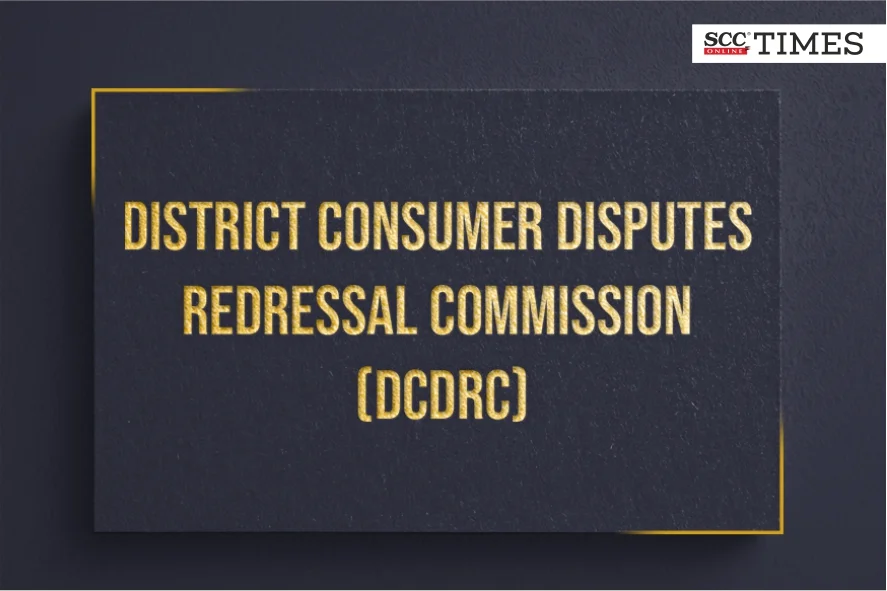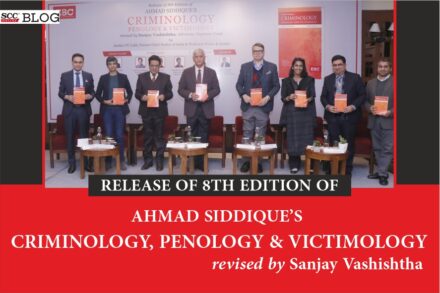District Consumer Disputes Redressal Commission (DCDRC), Jhargram: While considering a complaint alleging commission of medical negligence and deficiency in service while conducting Laparotomy on the complainant’s son; the Bench of Shyam Sundar Chattopadhyay (President) and Anjali Chaturvedi (Member) held the surgeon (1st OP) liable for medical negligence and deficiency in service pointing out that, the doctor did not obtain a valid consent for the surgery and there was an inadvertent and unjustified delay in operating the patient, due to which the liver abscess ruptured which was only revealed when the Laparotomy was conducted at the eleventh hour. The DCDRC stated that had Laparotomy been conducted faster, then the situation might have been better.
Furthermore, the Commission strictly noted that 1st OP conducted the Laparotomy relying on a 2-day old CT scan, whereas in these cases reports must be fresh and close in point of time to the operation. Furthermore, 1st OP also failed to provide an OT note to the complainant while his son was being taken to the referred hospital, which also constitutes deficiency in services.
Background:
In 15-7-2020, the complainant’s son (patient) developed fever from abdominal pain. After undergoing several tests including ultrasound and CT-Scan which was conducted on 4-8-2020, which revealed the probability of a Hepatic Abscess. After perusal of the reports, the patient was referred to the 1st OP for operation.
On 5-8-2020, a High-Risk consent for ‘drainage of liver abscess’ was obtained from the patient’s sister and the Emergency Laparotomy was planned for 6-8-2020, after a gap of almost 27-hrs from the date of the CT-scan report. On 7-8-2020, the patient developed certain complications and was later referred to Indian Institute of Liver and Digestive Sciences (IILDS) from where he was discharged on 18-8-2020.
The patient’s discharge report by IILDS stated that Laparotomy for liver abscess was attempted and abandoned after opening the peritoneal cavity and there was no proper OT note available when he was referred to IILDS.
In May 2023, an Investigation Committee was constituted by the Jhargram Medical College and Hospital in pursuance of the directions by the DCDRC.
Contentions:
The complainant contended that 1st OP negligently conducted the operation at a late hour of night, abandoned the patient and referred him to IILDS in a very unsafe condition. It was further argued that the surgery was beyond the infrastructural capacity of the hospital and skill set of the 1st OP and despite having knowledge of the same, the 1st OP exposed the patient to risk and gave referral without a proper operation.
Per contra, 1st OP contended that the patient was operated after obtaining of High-Risk consent and rupturing of the abscess was discovered after the abdomen was opened for surgery, hence it was not a simple case of liver abscess as was shown in the CT scan. It was also contended that had the CT scan shown the rupture, the 1st OP would not have performed the surgery. Furthermore, it was also questioned the non-inclusion of Jhargram Nursing Home as necessary party in the complaint.
Commission’s Assessment:
Vis-a-vis DCDRC’s jurisdiction over the instant case, the Commission held that the complaint is well within the pecuniary and territorial jurisdiction of the Commission.
Regarding complainant’s locus standi, the Commission rejected 1st OP’s argument that the surgery was done free of charge as the bill issued by Jhargram Nursing Home was clear evidence that the whole procedure was paid for as approximately Rs 35,000 was paid towards charges for bed, OT and other charges. Even though the charges were not paid directly to 1st OP, they were still paid through a medium, i.e., the nursing home.
Although the Commission expressed doubts as to how the complainant’s locus was established as the complainant did not show his locus to file the complaint before the Commission and same was not questioned by the Opposite Parties. Therefore, in absence of any contrary evidence and objection, the Commission made a positive assumption that the complainant has a locus.
Vis-a-vis non-inclusion of Jhargram Nursing Home as necessary party and whether this exclusion defeats the complaint, the DCDRC referred to Order 1 Rule 3 and Rule 9 of CPC and relevant precedents of the Supreme Court on necessary parties and relevant NCDRC decisions related to the extent of liability of a hospital/nursing home. The DCDRC pointed out nursing homes are vicariously liable for the wrongs committed by their doctors.
It was further noted that the instant complaint presented an opposite scenario wherein the doctor was impleaded, but the hospital was not. The Commission concluded that the instant complaint did not fail due to non-inclusion of Jhargram Nursing Home as necessary party, as vicarious liability means joint-liability along with the actual wrong-doer. Furthermore, the Commission stated that it is nowhere mentioned that a vicariously liable person needs to be impleaded for the case to succeed. The Commission, in the light of the statutory position and judicial precedents, held that Jhargram Nursing Home was not a necessary party to the complaint. “Compensation can always be granted against the doctor if he has been impleaded, because his liability is direct, constituting the tort of professional negligence”.
Vis-a-vis deficiency of service and medical negligence committed by 1st OP; the Commission delved deep into the jurisprudence of medical negligence highlighted by various judicial precedents and medical literature on the issue.
The Commission also perused the evidence produced before it. Considering the CT scan report dt. 4-8-2020, the DCDRC stated that it was not prudent on part of 1st OP to rely on a 2-day old CT scan report before performing the surgery on the patient and should have displayed some alacrity.
Vis-a-vis obtaining High-Risk consent from the patient sister, the Commission stated that consent of patient to undertake the risk of surgery is not a valid defense in cases of medical negligence. Furthermore, the Commission pointed out that the sister’s consent was a proxy/ substituted consent, furthermore the record did not show any emergency which may have required such proxy consent. Therefore, the Commission held that there was no valid informed consent to perform Laparotomy on the patient.
The Commission took note of the long delay, from obtaining the CT scan report to obtaining the proxy consent to performing the Laparotomy. Considering the available medical literature on liver abscess and the importance of timely surgery for the same, the DCDRC pointed out that the patient was indeed suffering from liver abscess, but something happened between obtaining the CT scan report and final operation, which changed the nature of the ailment as the abscess ruptured.
Considering the report by Investigation Committee, the DCDRC noted that the report absolved the 1st OP from any intentional negligence during the procedure for exploratory Laparotomy, although it may not have been the best procedure liver abscess management; however, the same was considered to be essential as per clinical knowledge and medical judgment of 1st OP.
However, the Commission pondered over “unintentional negligence” on part of 1st OP, or rather “What exactly has been the negligence on part of the OP No. 1?”.
The Commission, taking note of the relevant medical terms and procedures related to liver abscess and Laparotomy, as defined in the related medical literature, stated that the CT-scan report identifying the abscess was correct. The Commission pointed out that a liver abscess needs timely intervention and if it remains untreated, then the abscess can rupture and cause peritonitis and shock.
The Commission further pointed out that delay in surgery of medical abscess has been identified as a form of medical negligence and in the instant case, there was a considerable 27-hour time gap between the CT-scan report and Laparotomy, and it was during this within this time that the patient’s liver abscess ruptured. The Commission found that there was delay in starting the necessary procedures after receipt of the scans; the Laparotomy was done at the last hour of the day and that the Laparotomy was conducted after relying on a 2-day old scan report. The Commission noted that fortunately, the patient reached IILDS, so his life was saved and that it cannot overlook that he could have died.
The Commission found that the causation between the mental agony and risk that the patient was exposed to, and inadvertence of the doctor, was sufficiently established. Thus, the DCDRC found 1st OP negligent. The DCDRC also held that there was deficiency in services as the 1st OP did not provide any OT note to the patient while referring him to IILDS. The Commission awarded compensation of Rs. 4 Lakhs to be paid to the complainant.
However, the Commission also imposed exemplary costs of Rs. 5000 on the complainant for unnecessarily impleading 2nd OP, who acted as the anesthetist and was “merely caught in the crossfire between the parties”. The Commission thus observed that, “Law cannot be taken for a ride (…) Litigation is indeed a modern-day warfare, and a war is never a pleasant thing. The harassment, agony and tension that it causes, particularly when we are dealing with doctors who play a vital role in society, is unfathomable”.
[Ahin Kumar Rout v. Dr. Sirshendu Giri, CC/3/2021, decided on 27-9-2023]
Order by Anjali Chaturvedi (Member)
Appearing-
Complainant-in person







